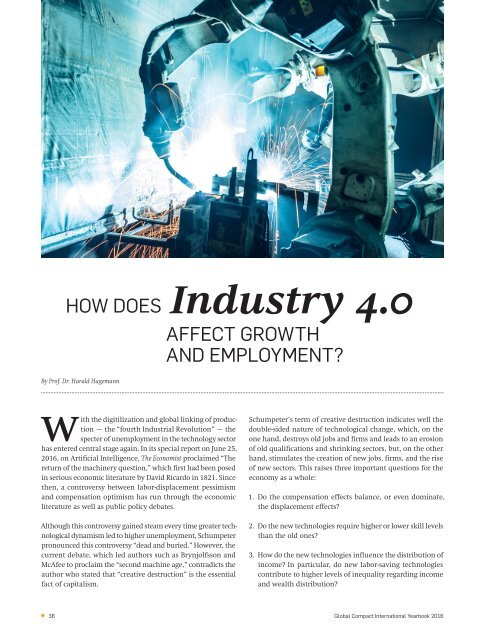Global Compact International Yearbook 2016
The Sustainable Development Goals are an ambitious agenda with 17 topics addressing the global challenges of our time. A key topic is innovation: Business must fit into planetary boundaries. This probably will not work with traditional business models. That is why we need new, fresh ideas. We need change, even when it happens in a rough, disruptive way. And the earlier the better. This is why the upcoming edition of the Global Compact International Yearbook, published in September 2016, has chosen sustainable innovation as the key topic. Also includes exclusive interviews with Angelina Jolie, Robert Redford and Sigourney Weaver. The Global Compact International Yearbook is with more than 500,000 readers one of the worlds leading CSR publications. Münster/New York 2016: 164 pages, paperback Publishing houses: macondo publishing/UN Publications Subscription (via UN Publications only): 30.00 USD (regular) 15.00 USD (reduced) ISBN13: 978-3-946284-01-7 / ISSN-Print: 2365-3396 / ISSN-Internet: 2365-340x
The Sustainable Development Goals are an ambitious agenda with 17 topics addressing the global challenges of our time. A key topic is innovation: Business must fit into planetary boundaries. This probably will not work with traditional business models. That is why we need new, fresh ideas. We need change, even when it happens in a rough, disruptive way. And the earlier the better. This is why the upcoming edition of the Global Compact International Yearbook, published in September 2016, has chosen sustainable innovation as the key topic.
Also includes exclusive interviews with Angelina Jolie, Robert Redford and Sigourney Weaver.
The Global Compact International Yearbook is with more than 500,000 readers one of the worlds leading CSR publications.
Münster/New York 2016: 164 pages, paperback
Publishing houses: macondo publishing/UN Publications
Subscription (via UN Publications only): 30.00 USD (regular) 15.00 USD (reduced)
ISBN13: 978-3-946284-01-7 / ISSN-Print: 2365-3396 / ISSN-Internet: 2365-340x
Create successful ePaper yourself
Turn your PDF publications into a flip-book with our unique Google optimized e-Paper software.
By Prof. Dr. Harald Hagemann<br />
Industry 4.0<br />
How does<br />
Affect Growth<br />
and Employment?<br />
With the digitilization and global linking of production<br />
– the “fourth Industrial Revolution” – the<br />
specter of unemployment in the technology sector<br />
has entered central stage again. In its special report on June 25,<br />
<strong>2016</strong>, on Artificial Intelligence, The Economist proclaimed “The<br />
return of the machinery question,” which first had been posed<br />
in serious economic literature by David Ricardo in 1821. Since<br />
then, a controversy between labor-displacement pessimism<br />
and compensation optimism has run through the economic<br />
literature as well as public policy debates.<br />
Although this controversy gained steam every time greater technological<br />
dynamism led to higher unemployment, Schumpeter<br />
pronounced this controversy “dead and buried.” However, the<br />
current debate, which led authors such as Brynjolfsson and<br />
McAfee to proclaim the “second machine age,” contradicts the<br />
author who stated that “creative destruction” is the essential<br />
fact of capitalism.<br />
Schumpeter’s term of creative destruction indicates well the<br />
double-sided nature of technological change, which, on the<br />
one hand, destroys old jobs and firms and leads to an erosion<br />
of old qualifications and shrinking sectors, but, on the other<br />
hand, stimulates the creation of new jobs, firms, and the rise<br />
of new sectors. This raises three important questions for the<br />
economy as a whole:<br />
1. Do the compensation effects balance, or even dominate,<br />
the displacement effects?<br />
2. Do the new technologies require higher or lower skill levels<br />
than the old ones?<br />
3. How do the new technologies influence the distribution of<br />
income? In particular, do new labor-saving technologies<br />
contribute to higher levels of inequality regarding income<br />
and wealth distribution?<br />
36<br />
<strong>Global</strong> <strong>Compact</strong> <strong>International</strong> <strong>Yearbook</strong> <strong>2016</strong>

















